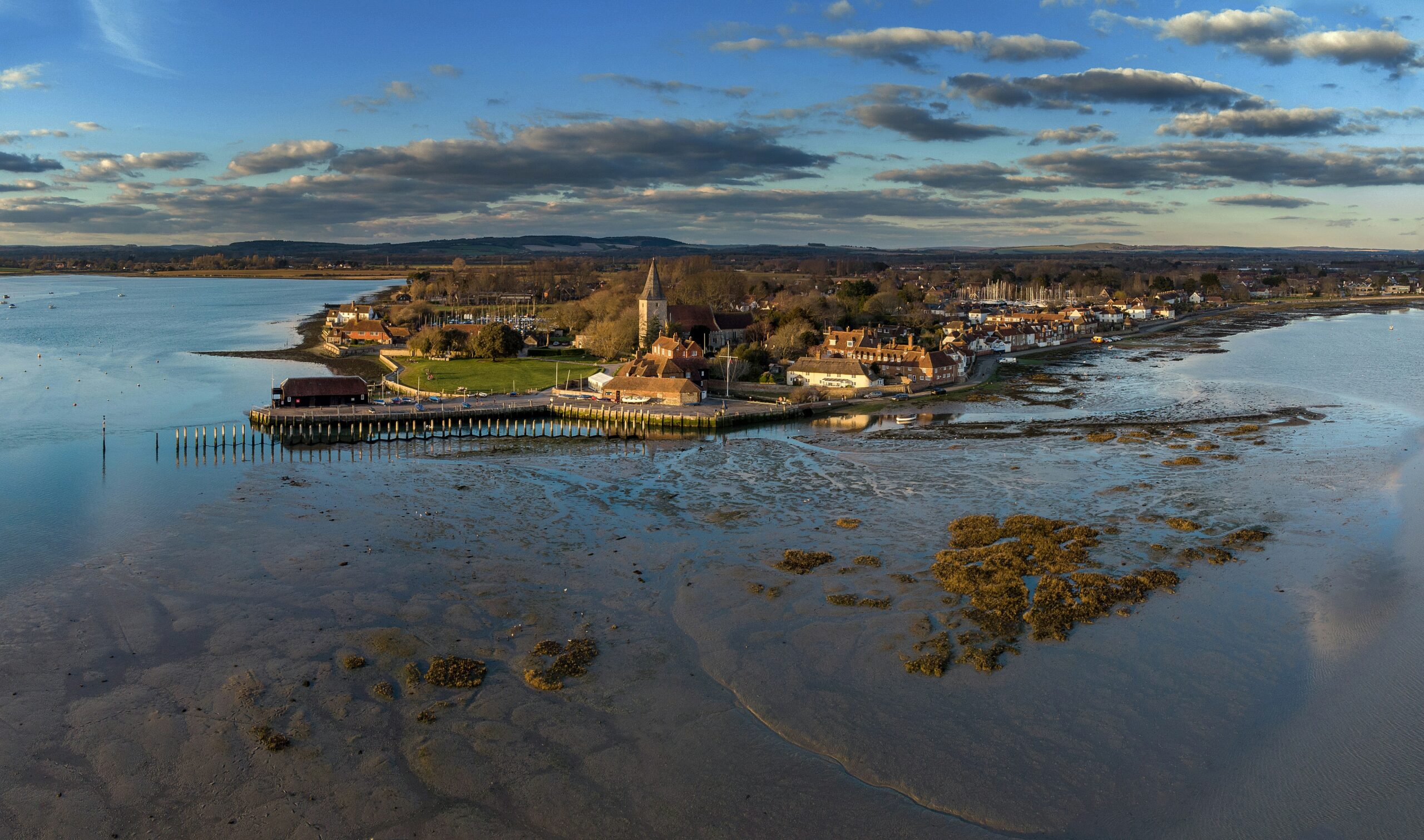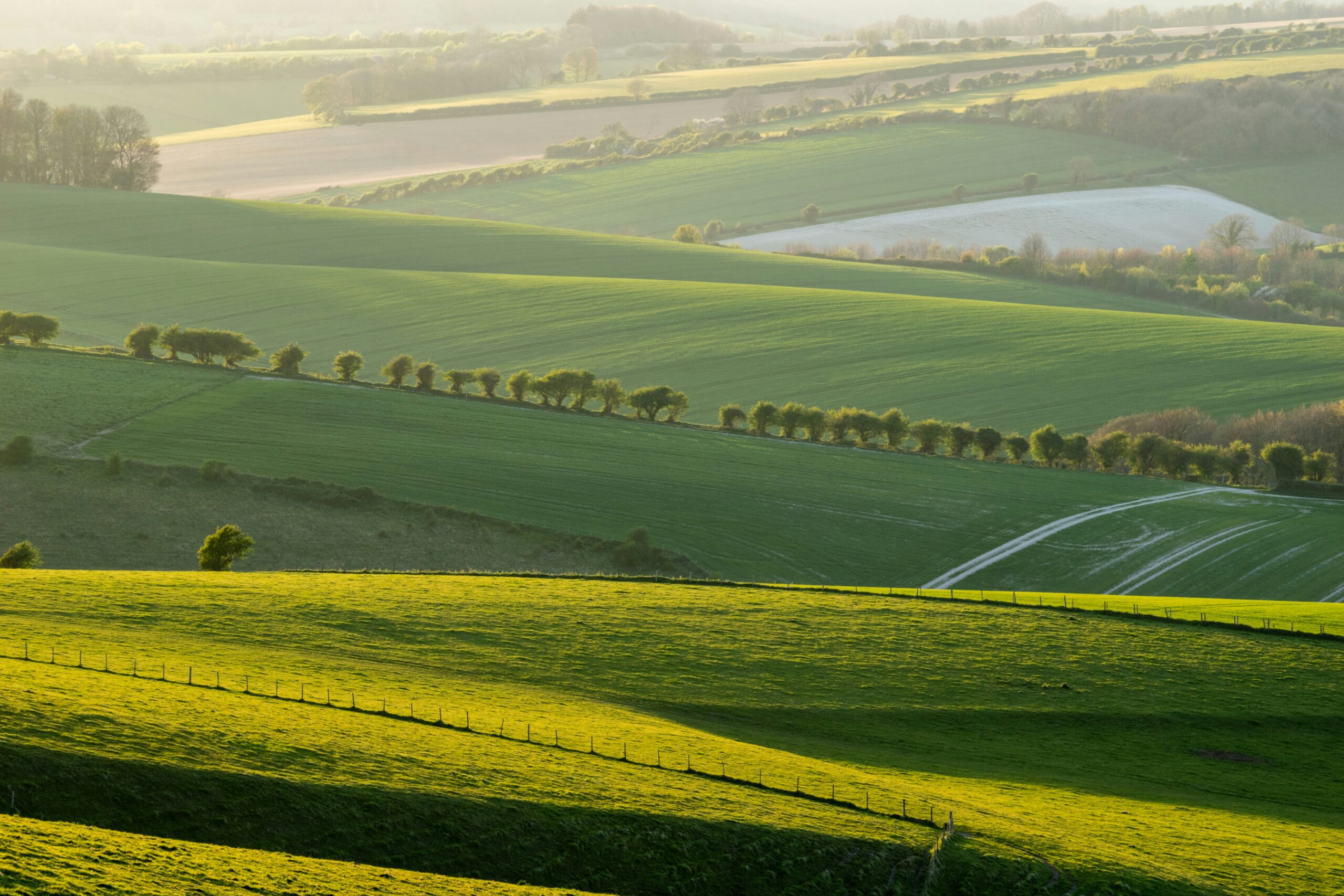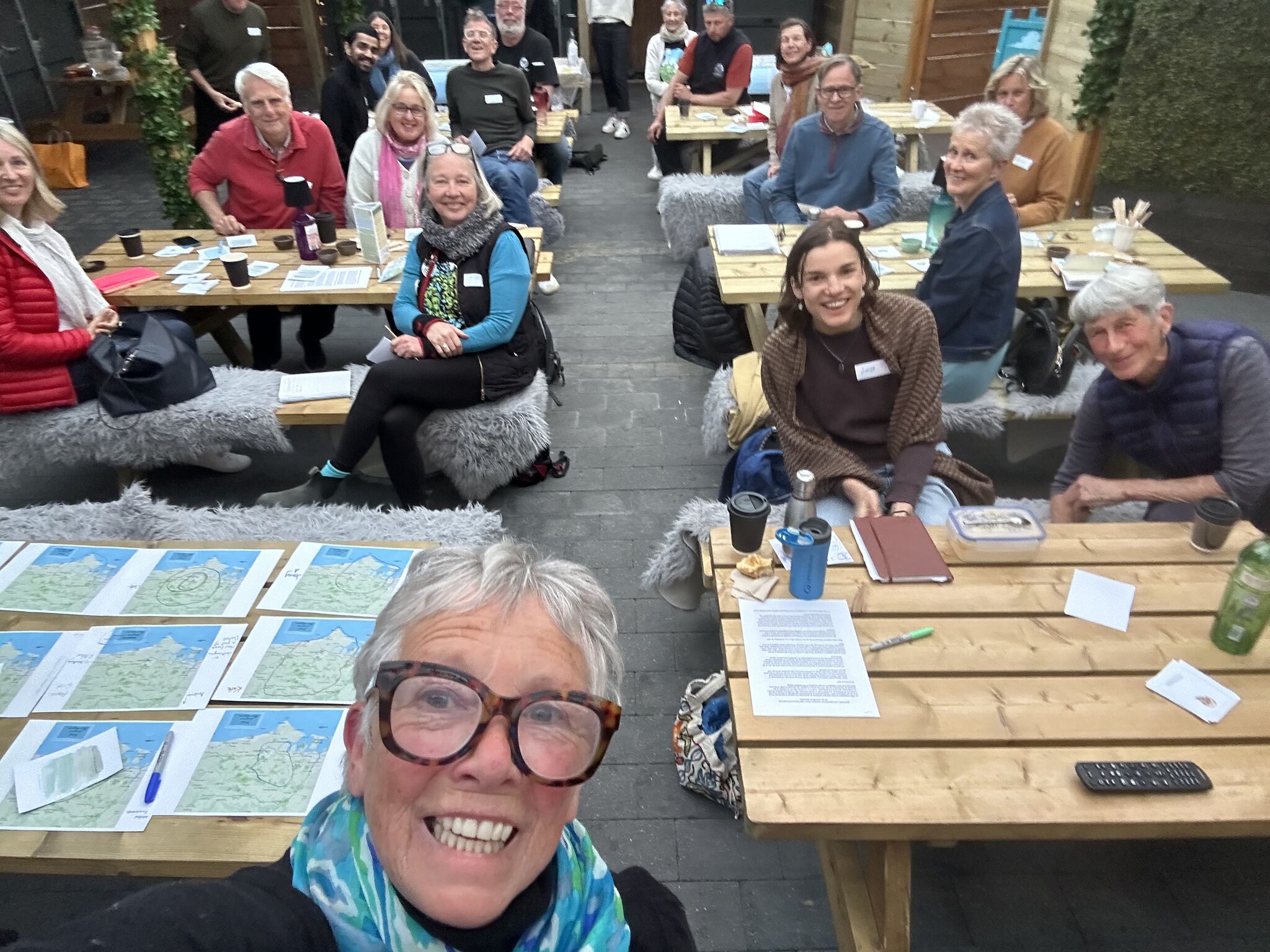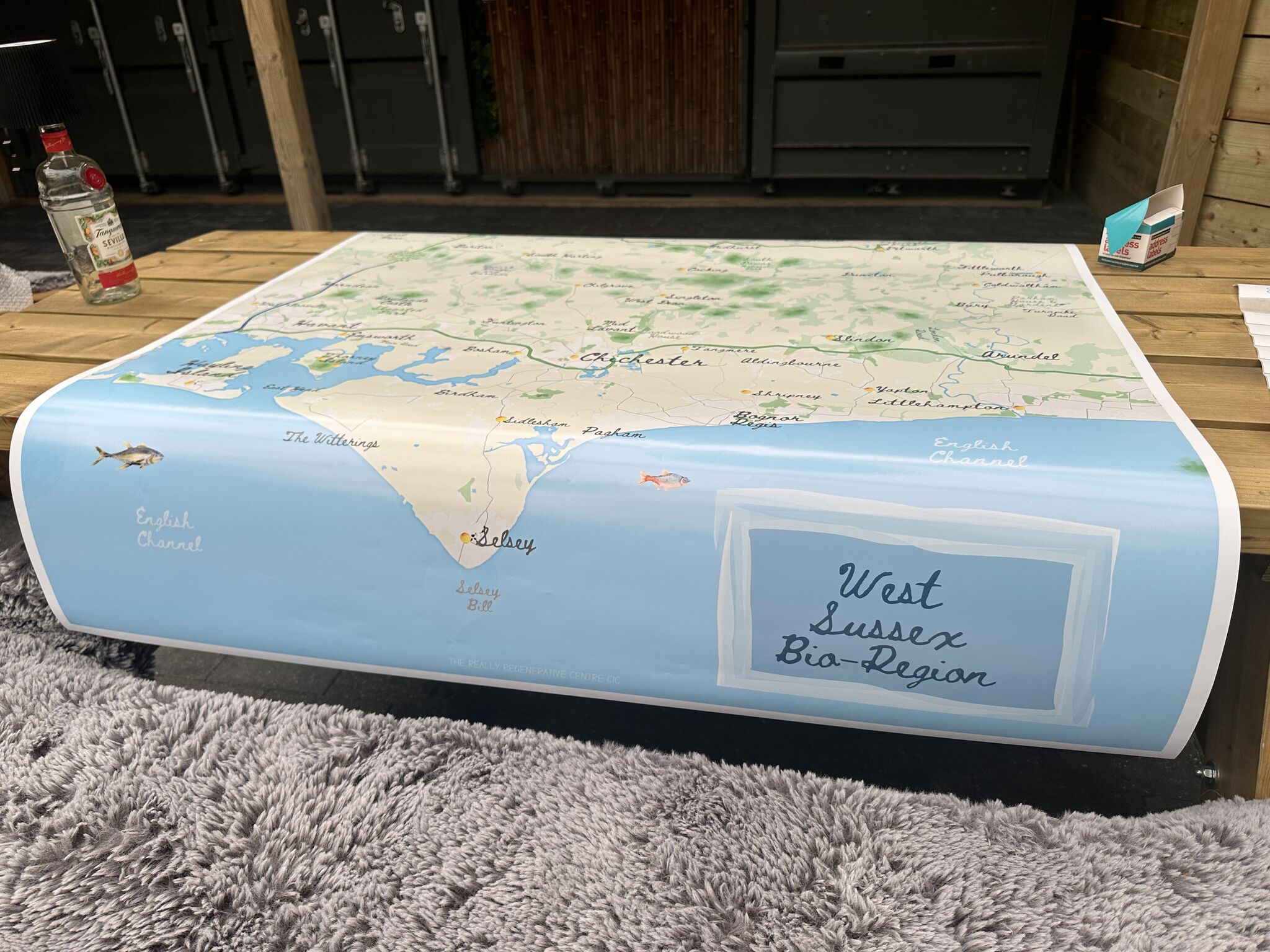A Bioregion for south west Sussex.
FROM THE GREEN TO THE BLUE.
Convening a community of bioregional practice and action along the coast and landscapes around Chichester and the inland landscapes of the South Downs from Petworth to Petersfield.
To join our community, register here.



Activating ‘islands of future potential’.
A vibrant future is not about the problems we can solve but the potential we can realise. All places have inherent future potential that comes from vitalising the unique qualities and characteristics of its place. From the flora and fauna that naturally inhabits a place to the culture and enterprise that supports human flourishing that stems from that bio-cultural uniqueness.
We’re convening a community of interest and practice exploring how a bioregional approach could be a viable and vitalising approach of civic engagement in our region. At a time when its seems everything is changing, we need strong civic relationships more than ever. And we need the ecological, economic and cultural systems on which we depend, to be healthy, fair, and vibrant.
Working at the scale of the bioregion–how human societies have organised themselves for millennia–we can see the many ecological, as well as human economic and cultural systems that create aliveness and vibrancy within our place.
Bioregioning is described as “the set of skills and pathways that bring vitality to these connections and enable us to take action at systems scale”. Critically it brings together efforts that are often siloed and looks at the whole picture of bioregional health; across ecology, economy and culture.
A bioregion is a geographic area defined not by political or economic boundaries but through its natural features – its geology, topography, climate, soils, hydrology and watersheds, agriculture, biodiversity, flora and fauna and vegetation. It’s also defined by its culture and economy.
We’re exploring the region around Chichester, the coastline, the inland landscape, and the bioregion it inhabits. How big is it? How far does it stretch? What territory would feel like ‘home’ but also be a manageable area to actively work on revitalising and regenerating our ecological, cultural and economic health?
Want to get involved in shaping a healthy and vibrant future for west Sussex borderlands?
It takes more than a village to create a healthy bioregion. It takes students, researchers, farmers, water-keepers, earth tenders, facilitators, economic shapers, urban planners, architects, activists, educators, storytellers, rewilders, conservationists, wildlife lovers, business owners, councillors, politicians, and more. All are welcome, all are wanted.
It takes a collective of citizens who come together to learn together. In ancient Greece it was called an Agora – an assembly of the common people, not the nobility, in a marketplace who gathered together in pursuit of wisdom. Join our Bioregional Agora!
What is a bioregion?
The simplest definintion of a bioregion is a geography not defined by political boundaries but by ecological, cultural and economic boundaries.
Bioregions are often defined by unique ecosystems, such as watersheds, forests, wetlands, or coastal areas. Bioregional mapping organisation One Earth describes a bioregion as: “.. generally smaller in scale than a biogeographical realm but larger than an ecoregion.”
Brandon Letsinger, one of the founders of the Cascadia bioregion on the western US/Canada seaboard says: “..a bioregion is a living mosaic – smaller than a biogeographic realm but larger than an ecoregion or an ecosystem, and is defined along watershed and hydrological boundaries using physical, ecological and cultural layers.”
Why are bioregions important – now?
For tens of thousands of years human beings lived in harmony with the living systems that support life on earth. Humans actively shaped the land in partnership with life to produce prolific abundance for the benefit of their ecologies of place In many places of the world where indigenous peoples still live, we still work as keystone species – a species on which entire ecosystems depend.
It’s time in this technological age to find ways to realign the human economic and cultural systems we have created. The earth needs us. We belong here. Through a commitment to our bioregions, we can:-
- We can turn degraded landscapes into habitats of abunddance.
- We can change divisive and polarised communities into collaborative, co-creative partnerships.
- We can shift extractive economic policies to distribute, resilient, shared vitality and viability.
We have started to map our bioregion.



Seeing systems is an important process of bioregioning. Only when we can see the interconnections between the systems on which we are dependent, and the effect they have on one another, are we able to take action that leads to transformative change.
Isabel Carlise, founder Bioregional Learning Centre, South Hams, Devon.
In order to see and understand the living systems that interconnect across our region.
Legendary systems thinker Donella Meadows first mentioned bioregional learning centres in her foundational paper for the Balaton Group in the 1980s. She envisioned groups of committed people and organisations who would be able to understand and intervene in the living systems in which they lived to create transformative, life-enhancing interventions that would create vitalised living places.
So we start with mapping and understanding systems, collating existing data and filling in the gaps. We are really fortunate to have so many caring, committed and courageous projects already in our bioregion, including water keepers, farmers, activists, biodiversity specialists, many active NGOs and lots of vibrant community groups in our villages and on the coasts. We also have organisational actors such as city and district councils, the SDNP, the Conservancy and many others who care deeply about the thrivability of our region. We will seek to understand the connections across all our systems to help build future resilience.
Water. Food. Energy. Waste. Transport. Culture. Money. Biodiversity. Soil. Forests. Intergenerationality. Loneliness. Circularity. And more.

How will bioregioning support west west Sussex?
A bioregional approach is :-
- A chance to re-set civic relationships between place-based institutions, people, place and planet.
- An invitation to explore a new alternative organising process.
Bioregioning is both a practice and a practical way in which to act for the future in times of polycrisis. Our bioregional journey will be one of learning about our bioregion’s health, understanding how the life support systems that flow across it work – or are blocked. And taking collective action to help create future climate resilience.
It is a way in which we can collectively heal the story of separation between humans and the living systems on which we depend.
Our work will be a jigsaw of science-based research and evidence, art and cultural revitalisation, building capability, supporting community-building, policy-making, and telling the story of the many diverse and wonderful regenerative projects that already exist. Our role will be as a backbone organisation to support this region to thrive into the uncertain future in the particular context of west west Sussex.

With grateful thanks to all our wise wonderful supporters!


